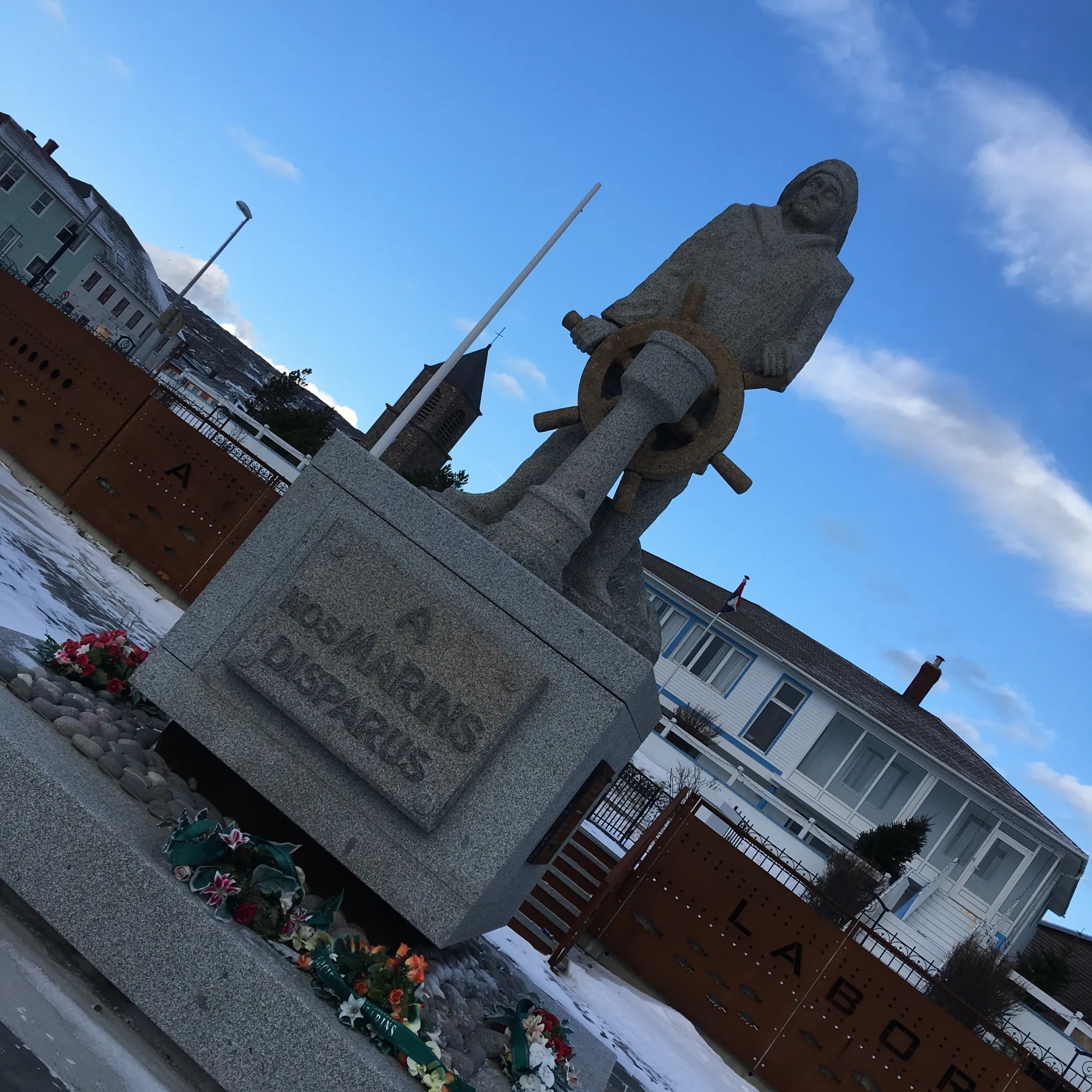A Seafaring Mystery Solved: How a Fisherman’s Intuition and Micro-AUV Tech Became Heroes of the Deep
- Eric Munday

- Oct 13
- 4 min read
Saint-Pierre-et-Miquelon — One of the North Atlantic’s enduring maritime mysteries has finally been solved. The wreck of the Ravenel, a French trawler lost in January 1962 with 15 people aboard, was located in May 2025, just seven nautical miles from the port of Saint-Pierre. The discovery, announced by CNRS researchers and local authorities, combines decades of persistence with a new wave of autonomous underwater technology.

The breakthrough came during a SEAMAP scientific mission, when a fleet of SEABER MARVEL micro-AUVs mapped the seabed and identified the wreck at a depth of 120 meters. The mission was guided by the insight of Karl Beaupertuis, a retired fisherman and former ferry captain, who had long maintained that the Ravenel lay in the very area where the drones ultimately found it.

A Fisherman’s Intuition Confirmed
Years before, Beaupertuis reported that he had likely encountered a shipwreck that might be the Ravenel while crab fishing. His claims went largely unacknowledged until the SEAMAP project brought researchers and advanced AUV technology to the archipelago. Acting on Beaupertuis’ advice, the mission redirected its survey to his suspected location. The result: sidescan sonar images revealed a 30 to 35-meter structure, consistent with the dimensions of the Ravenel.

“Without Karl’s experience at sea, the wreck might still be undiscovered,” said one CNRS researcher. “His knowledge narrowed the search in a way no chart or archive ever could.”

MARVEL AUVs Deliver Where Others Failed
The technological leap was provided by micro-AUVs provided by SEABER. The MARVEL AUV is a compact (approximately 1m length), autonomous underwater vehicle designed for coastal and offshore operations. Each MARVEL is a single-task unit equipped with sidescan sonar or other scientific payloads, enabling efficient and detailed seabed surveys.

Previous campaigns using larger, more expensive systems, including surface drones and ROVs, had failed to locate the wreck. By contrast, the MARVEL AUVs operated in harsh North Atlantic conditions with minimal logistical support, delivering high-resolution imagery that confirmed the location of the trawler. During the Ravenel search, four MARVEL AUVs mapped 4 km² in just three hours at 680 kHz resolution. The fleet of MARVEL AUVs accomplished what state-funded missions with bigger platforms could not: they found the Ravenel.

A Community’s Long Grief and Hard-Won Peace
For the families of the 15 sailors who perished, the Ravenel’s disappearance left a wound that never fully healed. Generations lived with unanswered questions, and each commemorative procession through Saint-Pierre served as a reminder of the lives cut short. Only a few fragments of wreckage had ever been recovered, and no bodies were found, leaving loved ones with uncertainty and grief.
Memorial to the 15 Lost Crew Members of Ravenel Photos Courtesy The Unintentional Mariner
Now, more than six decades later, the confirmation of the wreck’s location offers a measure of peace. “We have waited 63 years for this day,” said Sybil Olano, president of the Le Ravenel Association, whose father was among those lost. “The pain never went away, but knowing where they rest at last allows us to close a chapter that has haunted our families for generations.”
While the loss remains profound, the discovery provides a final resting place for the missing men and a point of closure for the community that has mourned them for so long.
A Painting of Gratitude for a 63-Year Quest
On Thursday, June 19, members of the Ravenel Association honored Captain Karl Beaupertuis with a beautiful painting of the Ravenel, created by Saint-Pierre artist Michèle Foliot. The gift was a heartfelt gesture of thanks for his instrumental role in locating the wreck of the long-lost fishing trawler, missing for more than six decades. The discovery of the Ravenel marked the end of a 63-year search and brought long-awaited closure to the families of the victims. For many, the moment was deeply emotional...a mix of relief, remembrance, and reflection after so many years of unanswered questions.

Closing a Historical Chapter
The identification of the wreck was formally confirmed on June 10, 2025, by wreck hunter Bertrand Sciboz and a CERES team who conducted an ROV-mounted video inspection. For Saint-Pierre-et-Miquelon, officials describe the find as a “historic moment” for the territory.
Implications for Marine Research and Industry
Beyond its historical importance, the Ravenel case demonstrates the practical effectiveness of micro-AUV technology. Small, cost-effective, and rapidly deployable, the MARVEL platform offers governments, researchers, and private operators a reliable tool for:
Wreck and archaeological surveys
Environmental monitoring and eDNA sampling
Habitat mapping and biodiversity studies
Offshore inspection and site characterization

The SEAMAP project also tested MARVEL micro-AUVs in multi-vehicle deployments, where 10 units operated simultaneously to collect environmental and biological data. This scalability positions the platform as a versatile solution for both scientific and commercial operations.
Tradition Meets Technology
The Ravenel’s discovery underscores a rare convergence: the lived experience of a local fisherman and the precision of autonomous robotics. Together, Beaupertuis’ intuition and the technical capabilities of MARVEL AUVs succeeded where decades of traditional and high-cost approaches had failed. For Saint-Pierre-et-Miquelon, it marks the end of a maritime enigma. For the wider world, it highlights how accessible, advanced AUV systems like MARVEL can deliver mission-critical results across diverse marine applications.
Learn More About SEABER Micro-AUVs HERE










Comments